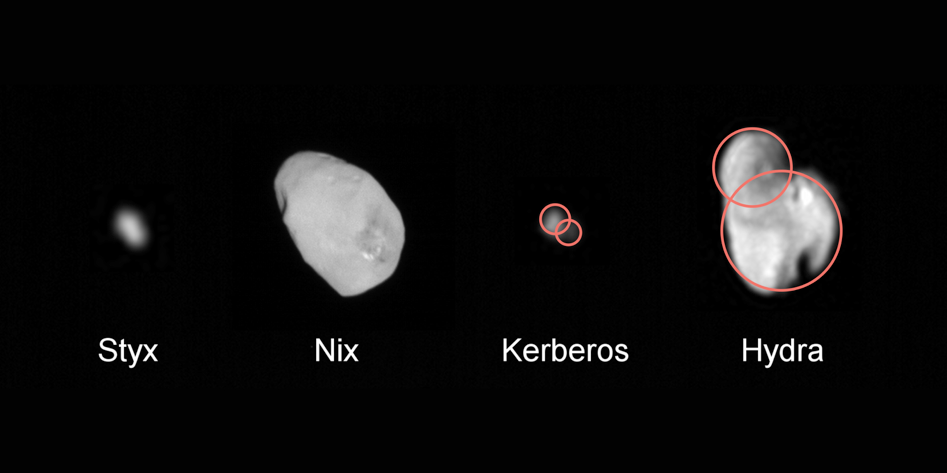Fascinating Discoveries on Pluto and Their Significance to Earth
Want to start an argument? Either joyfully declare that Pluto is no longer a planet or insist that it should be. For some reason, feelings run deep about the planetary status of this distant, icy body. Regardless of your stance on this controversy, the latest research on Pluto reveals some fascinating discoveries.
In 2006, NASA launched the New Horizons mission to Pluto in order to give us better insight into the dwarf planet. New Horizons made its closest approach on July 14, 2015 and mapped regions of Pluto’s surface within a mile in some areas. It has collected over 50 gigabits of data, and although it will take more than a year to transmit all that data back to Earth,1 the data sent so far provides an amazing look at the dwarf planet.
First, we’ve been able to observe the five moons that orbit Pluto in much more detail. Charon, the largest of the five moons, has a diameter more than half the size of Pluto. Charon exerts such a gravitational influence on Pluto that both objects are tidally locked to one another. In fact, Charon is so large that the Pluto-Charon system’s center of mass resides outside both bodies. No other planet-moon pair in the solar system exhibits this feature. Also, Charon and the other four moons, Nix, Hydra, Kerberos, and Styx, likely represent the remnants of a collision between Pluto and another 1,000 kilometer–sized object early in the solar system’s history.2 It even looks like some of Pluto’s moons could be the result of mergers between two or more moons. In light of this new information, the Pluto system provides astronomers with a real-world example to evaluate giant impact models like those believed to have formed Earth’s moon.
Figure 1: Pluto’s four small moons. At least two of Pluto’s small moons may have resulted from mergers between even smaller moons. Image credit: NASA/JHUAPL/SwRI
Second, the detailed imagery of Pluto’s surface showed features requiring ongoing geological activity. Craters as wide as 160 miles exist on the surface, and many of those craters are degraded and filled with debris. The amount of cratering in different regions means some areas of Pluto’s surface are more than 4 billion years old (about as old as Pluto) while others are only a few million years old!3 Similarly, numerous scarps and troughs indicate recent tectonic activity. Perhaps the most unexpected find was mountains tens of miles wide and a few miles high that look like volcanoes. The composition and temperatures associated with Pluto suggest that these “cryovolcanoes” spew melted slurries of ice, ammonia, methane, and other volatile substances.4
Third, observing the lack of small craters (and the abundance of large ones) on the surface of Pluto gave scientists clues about how these outer solar system bodies formed billions of years ago. Instead of growing from a small body to a large one via collisions with other similarly sized object, bodies in the Kuiper belt may have grown to their current sizes by accumulating material from their local environment. NASA has redirected New Horizons toward another Kuiper belt object in hopes of gaining more data to help answer this question.
In all honesty, the discovery of ongoing geological processes on Pluto (and Charon) surprised scientists. It remains unclear what provides the energy for these processes since any internal heat and tidal effects would have disappeared long ago. Some young-earth proponents argue that this surprising find points to a much younger age for the solar system (suggesting an age of just a few thousand years).5 However, this one scientific mystery does not warrant overturning a theory that explains so much about our solar system.
Pluto may not be our ninth planet anymore, but it continues to play an important role in understanding how we got here. No one denies that Earth seems remarkably suited to host an abundant and diverse array of life. Though Pluto cannot host life, figuring out how Pluto remains geologically active after billions of years will help us identify the processes that contribute to Earth’s habitability. I believe that the new insights we gain from studying Pluto will provide a greater appreciation for the work God has done here on Earth.
Endnotes
- “New Horizons: NASA’s Mission to Pluto; Data Collection,” John Hopkins University Applied Physics Laboratory, accessed November 12, 2015, https://pluto.jhuapl.edu/Mission/Spacecraft/Data-Collection.php.
- S. A. Stern et al., “A Giant Impact Origin for Pluto’s Small Moons and Satellite Multiplicity in the Kuiper Belt,” Nature 439 (February 2006): 946–48, doi:10.1038/nature04548; Robin M. Canup, “A Giant Impact Origin of Pluto-Charon,” Science 307 (January 2005): 546–50, doi:10.1126/science.1106818.
- S. A. Stern et al., “The Pluto System: Initial Results from Its Exploration by New Horizons,” Science 350 (October 2015), doi:10.1126/science.aad1815.
- NASA, “Four Months after Pluto Flyby, NASA’s New Horizons Yields Wealth of Discovery,” news release, November 9, 2015, https://www.nasa.gov/press-release/four-months-after-pluto-flyby-nasa-s-new-horizons-yields-wealth-of-discovery.
- Danny Faulkner, “Pluto’s Surface Is Young!,” Answers in Genesis, posted on July 20, 2015, https://answersingenesis.org/astronomy/solar-system/plutos-surface-is-young.






